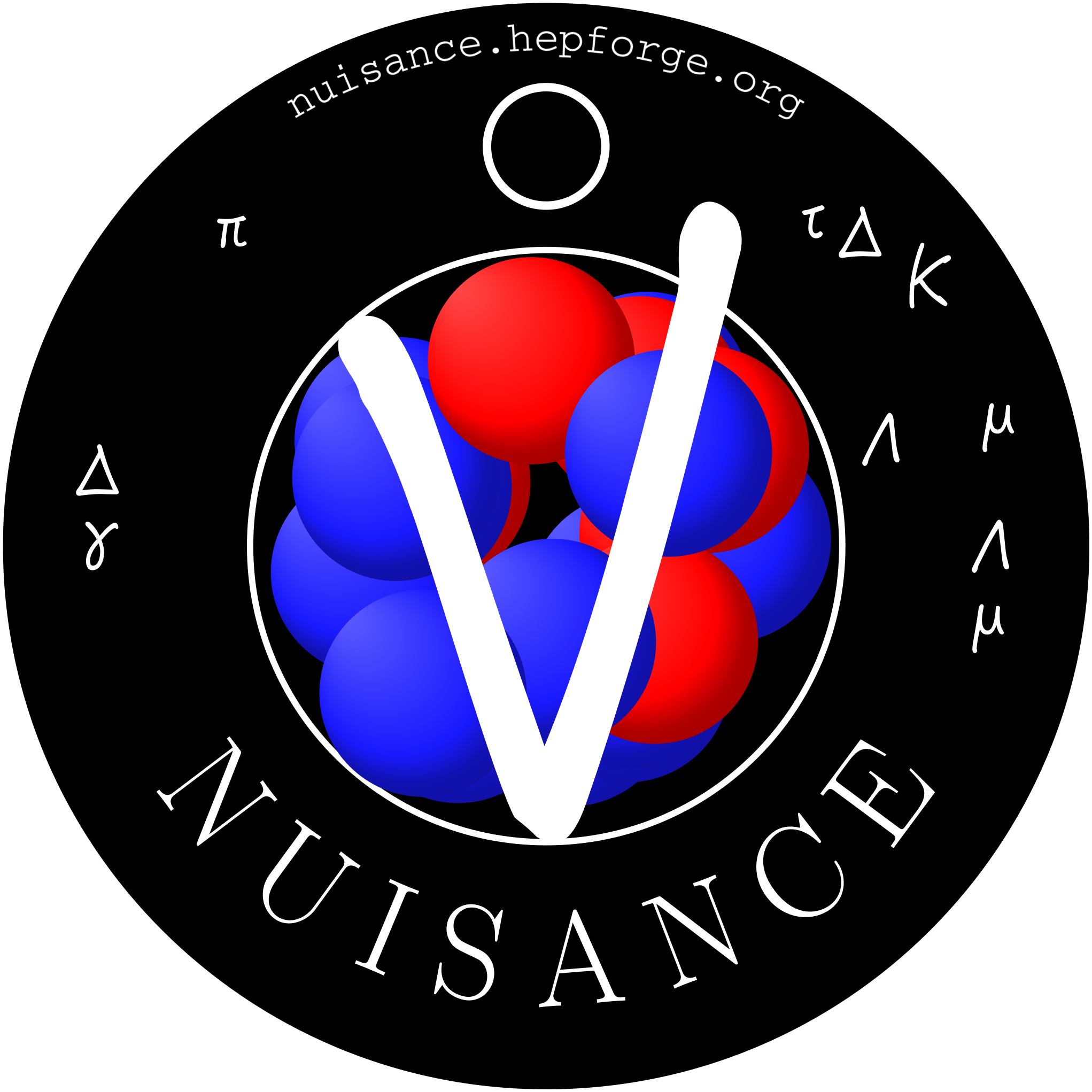|
|
close
Warning:
Can't synchronize with repository "(default)" ("(default)" is not readable or not a Git repository.). Look in the Trac log for more information.
- Timestamp:
-
Oct 30, 2016, 8:02:26 PM (8 years ago)
- Author:
-
Clarence Wret
- Comment:
-
--
Legend:
- Unmodified
- Added
- Removed
- Modified
-
|
v64
|
v65
|
|
| 7 | 7 | '''Comments and word of caution:''' flux simulation is hard work and it is known that the flux uncertainties from early bubble chamber experiments were under-estimated. |
| 8 | 8 | |
| 9 | | Additionally, some experiments seem to use the "flux" interchangeably with "event rate", which can confuse things further! |
| | 9 | Additionally, '''some experiments seem to use the "flux" interchangeably with "event rate"''', which can confuse things further. |
| | 10 | |
| 10 | 11 | |
| 11 | 12 | == Introduction == |
| … |
… |
|
| 25 | 26 | ANL had two runs in which it took data. A period of 1 horn running, another of 2 horns running. The final publications combine the result from the 1 horn and 2 horn running, but do not provide a joint average flux. ANL made both fluxes available but did not specify how much of the 1 horn flux was used in final analyses. Hence the truth PROBABLY lays somewhere in between the 1 horn and 2 horn fluxes. |
| 26 | 27 | |
| 27 | | [[Image(ANL_fluxes_all_on_one.png |
| | 28 | [[Image(ANL_fluxes_all_on_one.png, 600px, center)]] |
| 28 | 29 | |
| 29 | 30 | === Neutrino mode === |
| … |
… |
|
| 50 | 51 | == BNL == |
| 51 | 52 | |
| 52 | | * The BNL flux hard to come by. It is documented in three places; one of which is for a different detector (scintillator), one of which is determined from fitting MA CCQE events for the data-set up to 1981, another which repeats the CCQE fit with the full dataset. The latter was presented at NuInt02 but was never made public in other than the proceedings. The NuInt02 website is nowadays offline, and the proceedings were to be published in Nucl. Phys. B (Proc. Suppl.), which I have been unable to find. I got my copy through a colleauge at KEK instead. |
| | 53 | * The BNL flux hard to come by. It is documented in three places; one of which is for a different detector (scintillator), one of which is determined from fitting MA CCQE events for the data-set up to 1981, another which repeats the CCQE fit with the full dataset. The latter was presented at NuInt02 but was never made public in other than the proceedings. The NuInt02 website is nowadays offline, and the proceedings were to be published in Nucl. Phys. B (Proc. Suppl.), which I have been unable to find. I got my copy through a colleague at KEK instead. |
| 53 | 54 | |
| 54 | | [[Image(BNL_overlaid.png)]] |
| | 55 | [[Image(BNL_overlaid.png, 600px, center)]] |
| 55 | 56 | |
| 56 | 57 | === Neutrino mode === |
| … |
… |
|
| 66 | 67 | |
| 67 | 68 | * K. Furuno et al., ''BNL 7-foot Bubble Chamber Experiment -- Neutrino Deuterium Interactions, Proceedings of the Second International Workshop on Neutrino-Nucleus Interactions in the Few-GeV Region (NuInt02), To be published in Nucl. Phys. B (Proc. Suppl.)'', December 12-15, 2002, UC Irvine, USA, KEK Preprint 2003-48, September 2003, II |
| 68 | | |
| 69 | 69 | * This is the flux which we use for BNL. It uses CCQE events with double statistics to the above and a fit with MA = 1.1 GeV to determine the incident neutrino flux. |
| 70 | 70 | * [[Image(BNL_flux_NuInt02.png, 400px, center)]] |
| 71 | 71 | |
| | 72 | |
| 72 | 73 | === Anti-neutrino mode === |
| | 74 | |
| 73 | 75 | * Haven't found this |
| 74 | 76 | |
|
